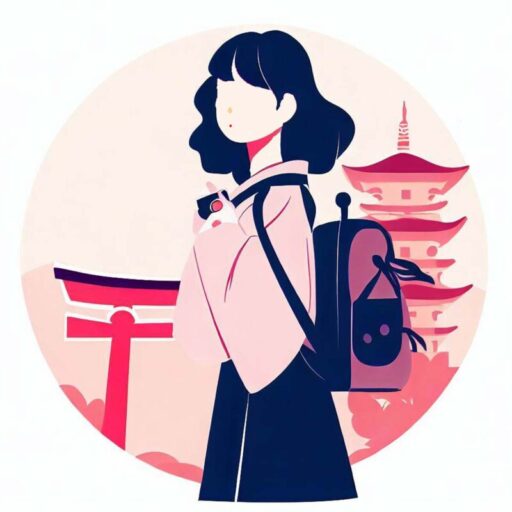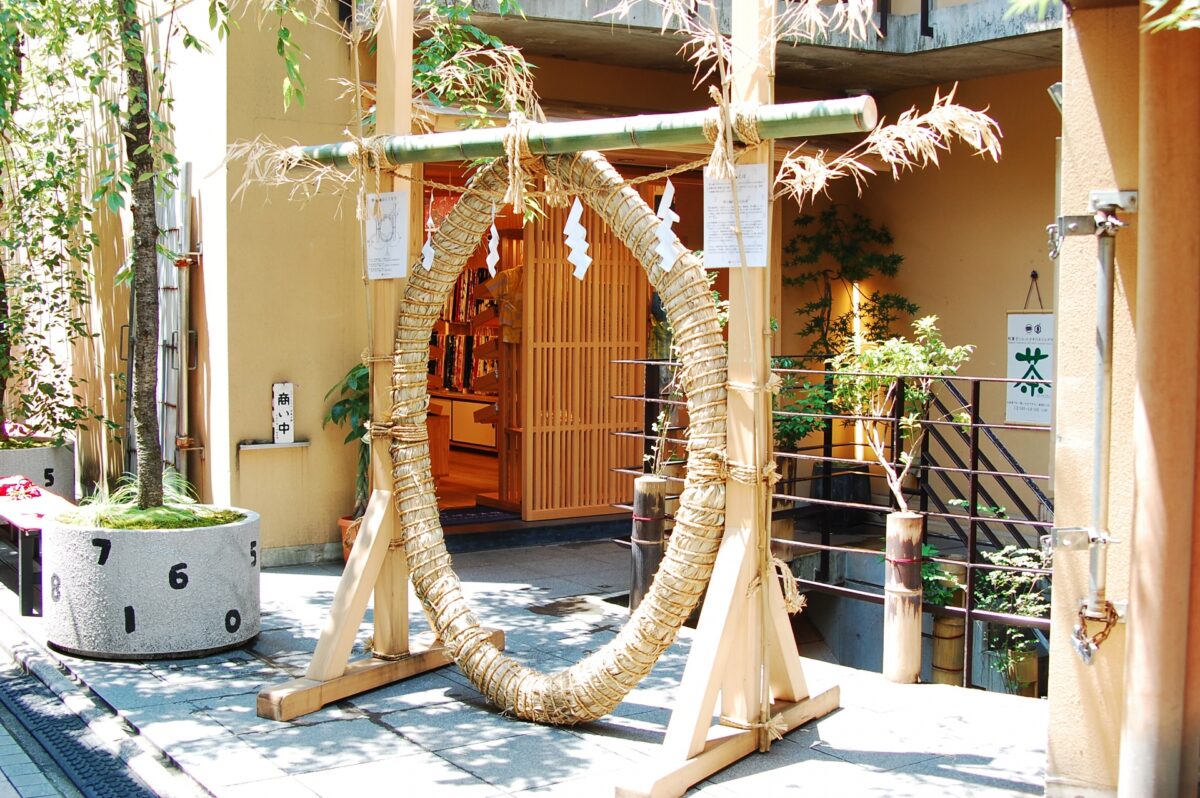Discovering the Charm of Summer Solstice Across Japan! A Female Writer’s Journey Through the Forty Seasonal Divisions of Japan

『 This article is… 』
This page introduces the customs of the summer solstice throughout Japan, from the flower fields of Hokkaido to the Hari festivals of Okinawa, explained through ‘Kasumi Points’ for each region. Ideal for those interested in Japanese traditional culture and regional characteristics. By reading this article, you can immerse yourself in the rich culture and diversity of Japan, gaining a deep understanding of the allure of the summer solstice in various parts of the country.
Hello, I’m Kasumi, a travel web writer. I embarked on a journey to explore the charm and meaning of “Summer Solstice” (Geshi), one of Japan’s forty seasonal divisions. The summer solstice is a special day when daylight is the longest in the year. While tracing the customs, history, and origins associated with this day, I’ll introduce the characteristics of each region and how the summer solstice is currently celebrated, blending in my own experiences. During my travels across all 47 prefectures of Japan, I discovered the profound significance of the summer solstice and the people who continue these traditions today. Now, I would like to share the record of my journey about the summer solstice with all of you.
- What is the Summer Solstice? – Its History and Origin
- How the Summer Solstice is Celebrated in Different Regions
- The Characteristics and Meanings of the Summer Solstice
- Regional Activities and Modern Events at the Summer Solstice
- Observing Japan’s Nature and Culture Through the Summer Solstice
- Learning about Japan’s Charm from the Summer Solstice Journey
- Kasumi Points
What is the Summer Solstice? – Its History and Origin
Introduction: The Basics of the Summer Solstice
My journey begins with the basics of the summer solstice. The summer solstice, one of the forty seasonal divisions in Japan, is the day when the sun reaches a longitude of 90 degrees. Specifically, it falls around June 21st each year, making it the longest day in terms of daylight. However, the significance of the summer solstice is not just about the length of daylight. Historically, the summer solstice had great importance in agricultural societies.
The Historical Background of the Summer Solstice
In Japan, the summer solstice has long been considered a crucial juncture in rice farming. At ancient tomb sites in Nara I visited, there are traces of special ceremonies conducted in anticipation of the summer solstice. These are manifestations of the agricultural people’s faith, relying on the power of the sun for a bountiful harvest. For ancient Japanese, the summer solstice represented a day of harmony with nature and a time to express gratitude.
Customs Related to the Summer Solstice
Traveling across the country, I experienced the richness of various summer solstice customs unique to each region. For instance, in Okinawa, a traditional boat race called “Hari” is held on the day of the summer solstice. It’s a significant cultural event that deepens community bonds by expressing gratitude to the sea gods and praying for maritime safety. In Kyoto, there’s a custom of passing through a large ring made of cogon grass, symbolizing a prayer for health and well-being. I participated in this event myself.
The Modern Significance of the Summer Solstice
In modern Japan, while the summer solstice is not an official public holiday, numerous events are held during this period. For example, a summer solstice festival is held along the Tama River in Tokyo, featuring local food and crafts, as well as live music. It provides an opportunity to rediscover the charm of the region while experiencing the special feeling of the summer solstice day.
Thus, the summer solstice is celebrated in various forms across Japan, adding color to our lives both as a regional custom and a modern festival. In the next part, we’ll delve into the specific ways the summer solstice is celebrated in different regions.
How the Summer Solstice is Celebrated in Different Regions
The Unique Customs of the Summer Solstice Shining Through Regional Characteristics
Japan is a country where different cultures are rooted in each region, and the customs of the summer solstice are no exception. I will introduce the unique ways of celebrating the summer solstice that I found in each region during my travels.
Hokkaido: Dialogue with Nature
In Hokkaido, the summer solstice is a season to fully appreciate nature. Particularly in places like Biei and Furano, the flower fields become vividly colorful as the summer solstice approaches. Locals have a custom of walking through the flower fields early in the morning on the day of the summer solstice to express gratitude for nature’s blessings. I walked with them, and the beauty of the flowers illuminated by the morning sun was truly breathtaking.
Kyoto: Honoring Tradition on the Summer Solstice
In Kyoto, there is a long-standing tradition of “passing through a cogon grass ring” on the summer solstice. Passing through the large ring installed at shrines cleanses the body and is believed to bring health and well-being. Experiencing this custom makes one feel the depth of Japan’s traditional culture. Additionally, food stalls using local ingredients are set up in the shrine precincts, allowing visitors to enjoy both food and culture simultaneously.
Okinawa: Celebrating the Summer Solstice with the Sea
In Okinawa, the relationship with the sea deeply influences how the summer solstice is celebrated. Especially in Miyakojima, a festival called “Hari” is held at sea on the day of the summer solstice. This festival, where fishermen compete in traditional boats, symbolizes gratitude for the blessings of the sea and the solidarity of the community. Participating in Hari, I was deeply impressed by the warm atmosphere of the locals and the vibrancy of the festival.
Tokyo: A Modern Way to Enjoy the Summer Solstice
In Tokyo, various events are held to celebrate the summer solstice. For example, the “Summer Solstice Festival” along the Tama River offers live performances, food trucks, and a handmade market, attracting many locals and tourists. This festival represents a new way of celebrating the summer solstice in an urban setting.
These ways of celebrating the summer solstice in different regions reflect the diversity and unique characteristics of Japan. In the next part, we will focus more deeply on the features and meanings of the summer solstice.
The Characteristics and Meanings of the Summer Solstice
Astronomical Characteristics of the Summer Solstice
Astronomically, the summer solstice is the day when the sun is positioned furthest north in the year, resulting in the longest day in the northern hemisphere. The length of the summer solstice day varies slightly across Japan, with longer days in Hokkaido and slightly shorter ones in Okinawa. This astronomical phenomenon has had a significant impact on people’s lives since ancient times.
The Summer Solstice and Japanese Culture
In Japan, the summer solstice has long been emphasized as a critical point in agricultural cycles. Especially in rice cultivation, this period marks the end of planting and the crucial growth phase of the rice plants. Also, the summer solstice traditionally signals the start of summer, and has long been recognized as the day heralding the arrival of the season. Customs of celebrating the summer solstice through festivals and events, aiming to harmonize with nature and pray for abundant harvests, have been passed down throughout Japan.
The Meaning Embodied in the Summer Solstice
The summer solstice is not just a day marking a seasonal transition, but also holds various meanings in Japanese culture. For example, the “passing through a cogon grass ring” ceremony during the summer solstice is a ritual of purification and preparation for the new season. Additionally, events celebrating the summer solstice strengthen community bonds and provide opportunities to pass regional traditions to the next generation.
The Role of the Summer Solstice in Modern Times
In modern Japan, the summer solstice has become a day where traditional customs and new lifestyles merge. For instance, events and festivals themed around the summer solstice are held in urban areas, attracting many people to celebrate this special day. Additionally, activities that emphasize a connection with nature and raise environmental awareness are also becoming more common during the summer solstice.
The summer solstice occupies a special place in the Japanese seasons, and its cultural and historical significance is profound. In the next part, we will focus on current activities and events related to the summer solstice in different regions.
Regional Activities and Modern Events at the Summer Solstice
The Current State of the Summer Solstice in Different Regions
The summer solstice is celebrated in various forms throughout Japan. The diversity, ranging from traditional local events to modern festivities, tells the story of Japan’s rich culture.
Hokkaido: Festivals Enjoying Nature
In Hokkaido, festivals celebrating the summer solstice are popular as events to fully enjoy nature. For example, in Furano, the “Summer Solstice Flower Festival” is held, featuring markets with local flowers and agricultural products and music events. This provides a wonderful opportunity to honor the region’s nature and agriculture and to convey the charm of Hokkaido’s summer to visitors.
Kyoto: The Intersection of Tradition and Modernity on the Summer Solstice
In Kyoto, the tradition of “passing through a cogon grass ring” continues during the summer solstice, but modern art events are also held. Traditional ceremonies at shrines and temples, along with art exhibitions and workshops held throughout the city, represent a harmony of old and new.
Okinawa: Community Festivals Centered on the Sea
In Okinawa, the “Hari” on the summer solstice remains a major event. However, recently, in addition to this traditional festival, activities to raise environmental awareness, such as beach clean-ups and ocean conservation-themed events, are also conducted. These activities show the region’s efforts to preserve traditions while addressing contemporary issues.
Tokyo: Urban Celebrations of the Summer Solstice
In Tokyo, various events celebrate the summer solstice. For instance, the “Summer Solstice Festival” along the Tama River features live performances, food trucks, and handmade markets, attracting a large number of people. The way of celebrating the summer solstice in urban areas beautifully merges urban enjoyment with community activities.
Observing Japan’s Nature and Culture Through the Summer Solstice
The Summer Solstice and Japanese Nature
Each of Japan’s four seasons has its unique beauty, but the summer solstice particularly highlights these changes. Traveling across the country, I felt that the summer solstice plays an important role in connecting nature and people’s lives. The vast flower fields of Hokkaido, the pure shrines of Kyoto, and the blue seas of Okinawa are all deeply connected to the customs of the summer solstice.
The Summer Solstice and Japanese Culture
The customs of the summer solstice are closely related to Japanese culture. Traditional events and festivals are valuable means of conveying the history and culture of a region to the present. For example, the “passing through a cogon grass ring” in Kyoto symbolizes the spirituality of Japan handed down from ancient times. Through these events, Japanese people express their coexistence with and gratitude towards nature.
Summer Solstice and Regional Communities
The summer solstice also serves as an opportunity to strengthen regional communities. The unique ways in which different regions celebrate the summer solstice contribute to forming each region’s identity and deepening bonds among residents. Events like the ‘Hari’ in Okinawa and the ‘Summer Solstice Festival’ in Tokyo provide not only the local residents but also visitors with opportunities to experience the region’s culture.
Contemporary Interpretation of the Summer Solstice
In modern times, the summer solstice has been reinterpreted in new forms. The fusion of tradition and modernity, the balance between nature and urban life, and the rise in environmental consciousness reflect the diverse values of contemporary Japan through the summer solstice. These movements indicate how Japan’s long-standing culture adapts to modern lifestyles.
Learning about Japan’s Charm from the Summer Solstice Journey
Summary of the Journey
Through this journey, I have realized the profound impact of the summer solstice on Japan’s nature, culture, and regional communities. From Hokkaido to Okinawa, the summer solstice customs and festivals I witnessed in various regions of Japan are testaments to the vibrant nature and culture of each area. From traditional events to modern-day festivals, the summer solstice symbolizes the diversity and evolution of Japan.
Personal Reflections
For me, this journey of the summer solstice was more than just a job; it was an experience filled with emotion and learning. What remains particularly close to my heart is the enthusiasm of people in celebrating the summer solstice and the beauty of unique customs rooted in each region. Observing the different ways the summer solstice is celebrated across regions made me appreciate the richness of Japanese culture and the strength of community bonds. Moreover, the new approaches to the modern summer solstice embody the charm of Japan, where tradition and innovation coexist.
Learnings from the Journey
The summer solstice is not just a seasonal milestone but a day for Japanese people to coexist with nature and express their gratitude. Through this journey, I have gained a deeper understanding of the culture across Japan and re-acknowledged the importance of values and traditions we should pass on. I hope to convey the magnificence of Japan’s nature and culture through the summer solstice to many people.
Through this blog, I hope you too can feel the charm of the summer solstice and have more opportunities to experience the diverse culture and nature of Japan. On the day of the summer solstice, why not enjoy the local customs in your area? I look forward to meeting you on my next journey!
Kasumi Points
Hokkaido
Kasumi Point: In Hokkaido, the summer solstice is a time when the beauty of nature stands out. The flower fields in Biei and Furano bloom most beautifully during the summer solstice. Locals have the custom of walking through these fields at dawn on this day to appreciate nature’s bounty. The beauty of the flowers illuminated by the morning sun is truly breathtaking, symbolizing a life in harmony with Hokkaido’s rich nature.
Kyoto Prefecture
Kasumi Point: In Kyoto, the traditional custom of ‘Nagoshi no Harae’ is practiced during the summer solstice. This ritual, conducted at shrines, involves passing through a large ring made of cogon grass to purify oneself and pray for good health. This custom reflects Kyoto’s age-old traditions and spirituality, symbolizing the region’s history and culture.
Okinawa Prefecture
Kasumi Point: The summer solstice in Okinawa is deeply connected with the sea. Especially in Miyakojima, a traditional boat race called ‘Hari’ is held. This event, thanking the sea gods and praying for marine safety, strengthens the bonds within the community. The summer solstice in Okinawa celebrates the blessings of the sea and the connections within the community.
Tokyo
Kasumi Point: In Tokyo, the ‘Summer Solstice Festival’ along the Tama River may be held. This festival features live music, food trucks, and handmade markets, showcasing a contemporary way of celebrating the summer solstice unique to urban areas. The summer solstice in Tokyo represents a new form of regional culture, blending tradition and modernity.
Nara Prefecture
Kasumi Point: In Nara, the summer solstice has historical significance dating back to ancient times. Particularly in the archaeological sites from the Kofun period, there is evidence of special rituals performed during the summer solstice. This reflects the belief of agricultural societies who prayed for bountiful harvests by harnessing the power of the sun, closely related to Japan’s agricultural culture.








